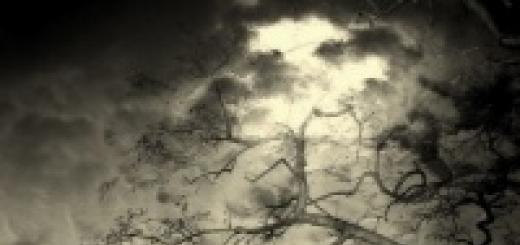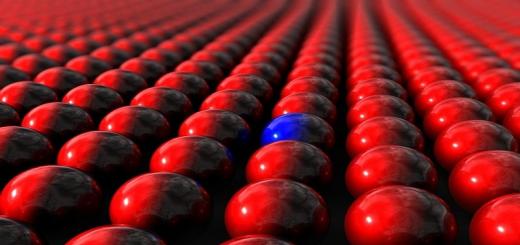Option 1.
1 . The chemical elements carbon, oxygen, hydrogen and nitrogen are called...
2. Differences between animate and inanimate nature arise at the ... level.
3. Thyroid hormones contain trace element ….
4. Hemoglobin molecule contains ions….
5. Substances soluble in water are called ....
6. With the complete oxidation of 1 g of lipids, ... energy is released.
7. Amino acids that make up proteins differ from each other ....
8. The process of destruction of the primary structure of the protein is called ....
9. Monomers of nucleic acids are ....
10. Proteins that affect the rate of biochemical processes in the cell are called ....
11. Structural polysaccharide of plants ....
12. Reserve polysaccharide of animals and fungi ….
13. The secondary structure of a protein is ....
14. Proteins actin and myosin perform ... a function.
15. According to the characteristics of monomers, polysaccharides belong to the group of ... biopolymers.
16. The process of synthesis of a new DNA chain on a matrix is called ....
17. Instead of thymine, RNA nucleotides include a nitrogenous base ....
18. A fragment of a DNA molecule encoding one polypeptide is called ....
19. The secondary structure in the form of a clover leaf has a molecule ....
20. Quantitative patterns of the content of nitrogenous bases in the DNA molecule established ....
Open type biology tests (tasks - additions) on the topic:
"Molecular level of organization of life" Grade 10.
Instructions for performing tests:
- Read the sentences carefully.
-Choose the necessary words to the places where they are missing.
- Under the appropriate numbers in the notebook, write down only what is missing.
Option 2.
1. At the elemental level, the differences between animate and inanimate nature ....
2. The composition of chlorophyll molecules includes metal ions ....
3. The supporting structures of horsetails and diatoms contain compounds ....
4. Due to the mobility of molecules, water can perform ... a function.
5. In relation to water, lipids and lipoids belong to the group of ... compounds.
6. With the complete oxidation of 1 g of carbohydrates, ... energy is released.
7. Sex hormones and adrenal hormones are synthesized in the body from ...
8. High-molecular organic compounds, the molecules of which consist of a large number of residues of simple molecules, are called ....
9. Monomers of proteins are ....
10. The process of restoring the natural structure of a protein after reversible denaturation is called ....
11. Structural polysaccharide of animals and fungi ….
12. The main reserve polysaccharide of plants ....
13. The primary structure of a protein is held by ... bonds.
14. Collagen and elastin proteins perform ... a function.
15. Proteins and nucleic acids, according to the characteristics of monomers, belong to the group of ... biopolymers.
16. The process of doubling the DNA molecule is carried out by the enzyme ....
17. DNA polynucleotide chains are located opposite each other according to the principle ....
18. Adenine nucleotides of DNA and RNA are different ....
19. All types of RNA are synthesized in ....
20. Scientists established the macromolecular structure of DNA, and also built a model of the DNA molecule, scientists ... and ....
Answers to tests of an open type (tasks - additions) on the topic:
"Molecular level of organization of life" Grade 10.
| |
|
| option 1 | option 2 |
| 1. organogenic 2. molecular 3. iodine 4. iron. 5. hydrophilic 6. 38.9 kJ 7. radicals 8. destruction 9. nucleotides 10. enzymes 11. cellulose 12. glycogen 13. spiral 14. motor 15.regular (periodic) 16.replication (reduplication) 17. uracil 18. gene 19. tRNA 20. E. Chargaff | 1. absent 2. magnesium 3. silicon 4. transport 5. hydrophobic 6. 17.2 kJ 7. cholesterol 8. biopolymers 9. amino acids 10. renaturation 11. chitin 12. starch 13. peptide 14. structural 15.irregular (heteropolymers) 16. DNA synthetase (DNA polymerase) 17. complementarity 18. pentose 19. core 20. D. Watson and F. Crick |
Criteria for evaluating works:
score 5 with 18-20 correctly completed tasks;
score 4 with 15-17 correctly completed tasks;
score 3 with 12-14 correctly completed tasks;
score 2 with 11 or less correctly completed tasks.
Tests of such a plan make it possible to test knowledge in a short time, and the possibility of guessing is excluded.
Pasechnik N. V. MBOU School No. 17 in Feodosia
Option 1
Part A 1. The monomer of a protein molecule is 1) nitrogenous base 2) monosaccharide 3) amino acid 4) lipid
2. Most enzymes are 1) carbohydrates 2) lipids 3) amino acids 4) proteins
3. The building function of carbohydrates is that they
1) form a cellulose cell wall in plants 2) are biopolymers
3) are able to dissolve in water 4) serve as a reserve substance of an animal cell
4. Lipids play an important role in cell life, since they
1) are enzymes 2) dissolve in water 3) serve as a source of energy 4) maintain a constant environment in the cell.
5. Proteins, unlike carbohydrates, have the ability to
1) solubility 2) denaturation 3) conduction of a nerve impulse 4) accumulation of a large amount of energy
6. What pairs of nucleotides form hydrogen bonds in the DNA molecule (complementary)?
1) adenine and thymine 2) adenine and cytosine 3) guanine and thymine 4) uracil and thymine
Part B 1 . The RNA molecule contains:
A) ribose B) guanium C) magnesium cation D) deoxyribose E) amino acid E) phosphoric acid
2. Establish a correspondence between the function of the compound and the biopolymer for which it is characteristic. In the table below, under each number that defines the position of the first column, write down the letter corresponding to the position of the second column
FUNCTION BIOPOLYMER
1) storage of hereditary information A) protein B) DNA
2) the formation of new molecules by self-doubling
3) acceleration of chemical reactions
4) is an essential component of the cell membrane
5) neutralization of antigens
12
3
4
5
Part FROM
Why does glucose not play a storage role in the cell?
Test on the topic "Molecular level of organization". Option 2
Part A 1. The bonds between monomers in a protein molecule are called
1) hydrogen 2) ionic 3) peptide 4) energy intensive
2. The protective function of proteins is manifested in the fact that they
1) undergo denaturation 2) serve as antibodies 3) participate in cell construction 4) transport gases
3. What reserve nutrient serves as an energy reserve of the cell?
1) starch 2) amino acid 3) nucleic acid 4) polysaccharide - chitin
4. Fats in the cell provide
1) transport of hydrophilic (water-soluble) substances 2) dissolution of hydrophobic (water-insoluble) substances 3) acceleration of chemical reactions 4) motor function
5. The main function of carbohydrates compared to proteins is
1) building 2) protective 3) catalytic 4) energy
6. What carbohydrate is included in the composition of RNA nucleotides? 1) ribose 2) glucose 3) sucrose 4) deoxyribose
Part B
1. The DNA molecule contains
A) phosphoric acid B) adenine C) ribose D) deoxyribose E) uracil E) iron cation
Write your answer as a sequence of letters in alphabetical order (no spaces or other characters).
2. Establish a correspondence between the function of the compound and the biopolymer for which it is characteristic. In the table below, under each number that defines the position of the first column, write down the letter corresponding to the position of the second column.
FUNCTION BIOPOLYMER
1) formation of cell walls A) polysaccharide B) nucleic acid
2) transportation of amino acids
3) storage of hereditary information
4) serves as a reserve nutrient
5) provides the cell with energy
Write down the resulting sequence of letters in the table and transfer it to the answer sheet (without spaces or other symbols).
12
3
4
5
Part C.1. Why is starch classified as a biopolymer and what property of starch determines its storage function in the cell?
Test work on the topic "Molecular level of life".
Option 1
Task 1 (only one correct answer).
1. The minimum level of life organization at which the ability to exchange substances, energy, information is manifested:
A. biospheric
B. cellular
B. molecular
D.organismic
2. What is the most common for all known levels of life organization?
A. elements that make up the system
B. the complexity of the structure of the system
B. patterns operating at each level
D. qualities possessed by this system
3. Which of the chemical elements is contained in cells in the smallest amount?
B. oxygen
B.carbon
G.hydrogen
4. The ability of a camel to tolerate thirst well is explained by the fact that fats:
A. retain water in the body
B. emit water during oxidation
B. create a heat-insulating layer that reduces evaporation
5. In what part of the digestive system does the breakdown of carbohydrates begin?
A. in the small intestine
B. in the stomach
B. in the duodenum
G. in the oral cavity
6. Changeable parts of an amino acid are:
A. carboxyl group
B. amino group and carboxyl group
B. radical
G. radical and carboxyl group
7. DNA and RNA monomers are:
A. nitrogenous bases
B. deoxyribose and ribose
B. nitrogenous bases and phosphate groups
D. nucleotides
8. Which of the RNA molecules is the longest?
9. The enzymatic function in the body is performed by:
A. carbohydrates
B. nucleic acids
B. amino acids
10. Which of the chemical elements is simultaneously part of the bone tissue and nucleic acids?
B. calcium
Task 2.
There are ____ types of nucleic acids in the cell - ____ and _____. These biopolymers are made up of ___________ called ____________. Each nucleotide is made up of ___ components.
The composition of DNA includes the following nitrogenous bases __________, __________, ___________,
The composition of RNA - __________, _________, ___________, __________.
2. Eliminate the superfluous concept.
A. glycine, valine, isoleucine, thymine, arginine.
B. starch, fructose, glycogen, cellulose, chitin.
3. If the DNA chain contains 18% of G nucleotides, then what should the amount of T nucleotide approximately equal?
Option 2.
Task 1 (only 1 correct answer).
1. Which of the levels is the highest level of life organization?
A. cellular
B. biogeocenotic
B.organismic
G. biospheric
2. Interspecies relations begin to appear:
A. at the organismal level
B. at the population-species level
B. at the biogeocenotic level
G. at the biospheric level
3. Which of the properties of water is due to its polarity?
A. thermal conductivity
B. ability to dissolve polar compounds
B. Ability to dissolve non-polar compounds
D. heat capacity
4. Food proteins are digested:
A. in an alkaline environment
B. in an acidic environment
B. in a slightly alkaline environment
G. in a neutral environment
5. Which of the chemical compounds is not a biopolymer?
A. cellulose
B.glucose
6. In which of the named substances do lipids dissolve?
D. hydrochloric acid
7. The primary structure of the protein is retained:
A. hydrophobic bonds
B. peptide bonds
B. hydrogen bonds
D. disulfide bonds
8. Enzymes are biological catalysts consisting of:
A. lipids
B. nucleotides
9. What function does t-RNA perform?
A. amino acid transfer to ribosomes
B. forms ribosomes
B. removal and transfer of information from DNA
D.All the features listed
10. The secondary structure of the protein is maintained:
A. peptide bonds
B. hydrogen bonds
B. disulfide bonds
G. bonds between acid radicals.
Task 2.
1. Fill in the gaps in the text:
Chemical compounds made up of ____________ are called polymers. Biopolymers include ___________, ____________ ____________, __________, ___________. The monomers of proteins are ____________, most carbohydrates __________, DNA and RNA ____________.
2. Eliminate the extra concept:
A.cytosine, thymine, glycine, adenine, guanine
B. glycine, chitin, valine, cysteine, alanine
3. If the DNA chain contains 31% of nucleotide A, then what should the amount of nucleotide C be approximately equal to?
Right answers:
Option 1 Option 2
Task 1. Task 1.
10 - b 10 - b
Task 2
1.Two. DNA and RNA. Monomers, nucleotides. 1. Monomers. proteins, nucleic acids,
3. Adenine, thymine, guanine, cytosine. Adenine, fats, carbohydrates. amino acids, glucose,
uracil, guanine, cytosine. nucleotides.
2. A. thymine 2. A. glycine
B. fructose B. chitin
Molecular level of organization of living nature. test grade 9 Ι option
1. The connection of two strands of DNA into a helix is carried out by bonds:
a) ionic
b) hydrogen
c) hydrophobic
d) electrostatic
2. Monosaccharides include:
a) lactose, glucose
b) deoxyribose, sucrose
c) glucose, fructose
d) glycogen, maltose
3. Polymers include:
a) starch, protein, cellulose
b) protein, glycogen, fat
c) cellulose, sucrose, starch
4. Monomers of DNA and RNA are:
a) nitrogenous bases
b) deoxyribose and ribose
d) nucleotides
5. Changeable parts of an amino acid are:
a) amino group and carboxyl group
b) radical
c) carboxyl group
d) radical and carboxyl group
6. Which of the substances is highly soluble in water?
a) fiber b) protein c) glucose d) lipids
7. In which case is the composition of the DNA nucleotide correctly indicated?
a) ribose, phosphoric acid residue, thymine
b) phosphoric acid, uracil, deoxyribose
c) phosphoric acid residue, deoxyribose, adenine
d) phosphoric acid, ribose, guanine
8. Amino acids in a protein molecule are connected by:
a) ionic bond
b) peptide bond
c) hydrogen bond
d) covalent bond
9. Enzymes are biocatalysts consisting of:
a) proteins b) nucleotides c) lipids d) fats
10. Carbon as an element is included in:
a) proteins and carbohydrates
b) carbohydrates and lipids
c) carbohydrates and nucleic acids
d) all organic compounds of the cell
Molecular level of organization of living nature. test grade 9 ΙΙ option
1. What is the function of ribosomal RNA?
a) forms the active centers of the ribosome
b) carries information from DNA
c) carries amino acids to ribosomes
d) all of the listed functions
2. Molecules are built from amino acid residues:
a) carbohydrates b) proteins c) lipids d) fats
3. The secondary structure of the protein is maintained:
a) peptide bonds
b) hydrogen bonds
c) disulfide bonds
d) covalent bonds
4. In the process of biochemical reactions, enzymes:
a) they speed up reactions without changing themselves
b) accelerate reactions and change as a result of the reaction
c) slow down reactions without changing
d) slow down reactions by changing
5. Which of the named chemical compounds is not biopolymer?
a) protein b) glucose c) deoxyribonucleic acid d) cellulose
6. Protein molecules differ from each other:
a) the sequence of alternation of amino acids
b) the number of amino acids in the molecule
c) the shape of the tertiary structure
d) all of the above features
7. Monomers of nucleic acids are:
a) deoxyribose and phosphate groups
b) ribose or deoxyribose
c) nitrogenous base, carbohydrate, phosphoric acid residue
d) nucleotides
8. What is the function of transfer RNA?
a) carries amino acids to ribosomes
b) carries information from DNA
c) forms ribosomes
d) all of the listed functions
9. Polysaccharides include:
a) starch, ribose
b) glycogen, glucose
c) cellulose, starch
d) starch, sucrose
10. The cell contains DNA:
a) in the nucleus and mitochondria
b) in the nucleus, cytoplasm and various organelles
c) in the nucleus, mitochondria and cytoplasm
d) in the nucleus, mitochondria, plastids
Biology tests grade 11.
1 option
Enzymes perform the following functions:
A. are the main sources of energy
B. accelerate biochemical reactions
B. transport oxygen
G. participate in a chemical reaction, turning into other substances.
The organic substances that make up the cell include:
A. proteins, fats, carbohydrates
B. nucleic acids
D. Anions of weak acids.
Proteins are biological polymers, the monomers of which are:
A. nucleotides
B. amino acids
B. peptides
G. monosaccharides.
A. life and death
B. synthesis and decay
B. excitation and inhibition
5. Choose one "extra" term
A. Molecule
B. reagent
B. reaction
G. enzyme
Photosynthesis products are presented in the form of monosaccharides and polysaccharides
B. carbohydrates
B. lipids
D. enzymes
7. Affect membrane permeability and activity of many enzymes
B. carbohydrates
B. lipids
G. hormones
A Replication
9. Fusion reactions that take place with the help of solar energy are called
A. photolysis
B. Photosynthesis
B. metabolism
G. glycolysis
Elementary particle of genetic information
Biology tests grade 11.
Theme "Molecular level of life"
Option 2
1. The process of releasing the necessary energy from organic substances by splitting them is called
A. biological oxidation
B. aerobic digestion
B. glycolysis
G. photolysis
Low molecular weight organic substances regulating processes in the cell
B. Lipids
B. vitamins
G. enzymes
Substances of a living cell that do not participate in a chemical reaction, but accelerate it:
A. Enzymes
B. Vitamins
B. Hormones
D. Coenzymes
A group of irreplaceable minerals, small in number, that ensure the vital activity of organisms
A. Trace elements
B. macronutrients
B. Enzymes
G. coenzymes
One of the artificial polymers that turn out to be useful in the human economy:
A. cellulose
B. fluoroplast
B. polyethylene
G. polystyrene
Substances that destroy pests of agricultural crops, increasing their productivity
A. herbicides
B. pesticides
B. Mineral fertilizers
7. Choose one "extra" term
A. Molecule
B. reagent
B. reaction
G. enzyme
8. Choose one "extra" term
B. amino acid
B. macromolecule
G. energy
A biosynthesis
B. photosynthesis
B. broadcast
D. transcription
And carbohydrates
G. carbon
Biology tests grade 11.
Theme "Molecular level of life"
3 option
1. Products of photosynthesis are presented in the form of monosaccharides and polysaccharides
B. carbohydrates
B. lipids
D. enzymes
2. Substances of a living cell that do not participate in a chemical reaction, but accelerate it:
A. Enzymes
B. Vitamins
B. Hormones
D. Coenzymes
3. The organic substances that make up the cell include:
A. proteins, fats, carbohydrates
B. nucleic acids
D. Anions of weak acids.
4. The process of releasing the necessary energy from organic substances by splitting them is called
A. biological oxidation
B. aerobic digestion
B. glycolysis
G. photolysis
5. These substances perform building, protective, transport functions
B. carbohydrates
B. lipids
G. hormones
6. Bioelements are called chemical elements:
A. included in animate and inanimate nature
B. cells involved in life
B. included in the composition of inorganic molecules
G. are the main component of all organic connections of a cell.
Metabolism consists of two interrelated and oppositely directed processes:
A. life and death
B. synthesis and decay
B. excitation and inhibition
D. oxygen uptake and carbon dioxide release
8. Affect membrane permeability and activity of many enzymes
B. carbohydrates
B. lipids
G. hormones
9. Choose one "extra" term
B. amino acid
B. macromolecule
G. energy
10. Choose one "extra" term
A biosynthesis
B. photosynthesis
B. broadcast










